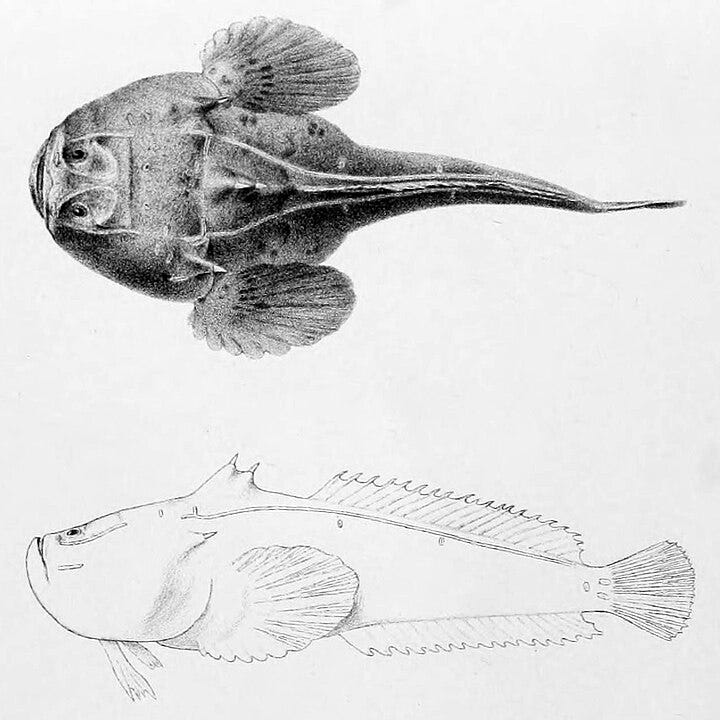Innovative Asthma Relief: The Toadfish Venom Breakthrough
Written on
Chapter 1: The Secret of the Toadfish
In the depths of our oceans, an intricate battle for survival unfolds. Among the diverse fish species residing in these aquatic environments, some possess a secret weapon: venom. Equipped with spines or stingers linked to venom glands, these fascinating creatures have a powerful means of defense against predators. A notable example is the venomous toadfish, scientifically known as Thalassophryne nattereri. This small fish, found in the calm coastal waters of North and Northeast Brazil, is referred to locally as “niquim,” which is derived from an Indigenous term for fish.
This remarkable fish, adorned with dorsal and lateral spines enveloped by a membrane, can unleash venom when threatened. Researchers have long been intrigued by the venom of T. nattereri, captivated by its potential to inform treatments for various diseases.
In São Paulo, Brazil, a dedicated team at the Butantan Institute has set out to explore the mysteries hidden within the venom of this toadfish. Supported by the São Paulo Research Foundation (FAPESP), these researchers embarked on a quest that led them to uncover a small yet potent molecule — a peptide capable of regulating lung inflammation.
Mônica Lopes-Ferreira, a biologist at the Center for Research on Toxins, Immune Response, and Cell Signaling (CeTICS), recalls the beginnings of their ambitious project. “We initiated our study of T. nattereri venom in 1996, aiming to analyze its toxins to develop a treatment for individuals injured in accidents,” she shares, her dedication evident.
As their research progressed, the team made a significant breakthrough — they discovered a peptide unlike any previously known. Lopes-Ferreira reflects on their astonishment, stating, “We found an entirely novel molecule that had never been identified before.” This peptide, named TnP (T. nattereri peptide), demonstrated remarkable anti-inflammatory effects in laboratory tests.
In a published study in the journal Cells, the researchers outlined their discoveries. Mice treated with TnP exhibited impressive results — no indications of airway hyperreactivity or lung remodeling. The molecule acted both systemically on secondary lymphoid organs and locally within the lungs, effectively suppressing the production of cytokines Th2 and Th17. Additionally, it thwarted the hyperplasia of mucus-producing cells and diminished the thickening and deposition of sub-epithelial collagen.
“Our findings suggest that TnP could be a candidate molecule for treating airway remodeling associated with inflammatory diseases, such as asthma,” the authors assert, hinting at a future where relief from asthma symptoms may be attainable.
Dr. Lopes-Ferreira underscores the importance of their discovery and its broader implications. “Many diseases trigger inflammation. We opted to study asthma to test TnP in animal models and found it to be safe and effective. It alleviated lung inflammation caused by asthma,” she exclaims. This represents a significant achievement for Brazil's scientific community.
To protect their groundbreaking discovery from misuse, the team has proactively filed for a patent, safeguarding the integrity of their findings. However, their mission is not yet complete. “We aim to further our research,” declares Lopes-Ferreira with steadfast resolve. “The more we learn, the better our understanding of the diseases TnP can potentially address. Partnering with a pharmaceutical company interested in developing a medical drug from TnP will be essential.”
The implications of TnP extend well beyond asthma treatment. A study funded by FAPESP in October 2016 highlighted that T. nattereri contains molecules potentially capable of combating sclerosis, adding another exciting chapter to the story of this remarkable fish.
As we navigate the evolving landscape of scientific discovery, the venomous toadfish, Thalassophryne nattereri, emerges as an unforeseen champion — a source of hope and healing. Thanks to the relentless efforts of scientists at the Butantan Institute and the support from FAPESP, the world has begun to appreciate the extraordinary potential inherent in nature’s treasures.
The toadfish peptide, TnP, promises to change the lives of millions suffering from asthma, providing a reprieve from the burdens of inflammation. With every advancement, these pioneering scientists draw closer to fully realizing TnP’s potential, opening the door to innovative treatments for inflammatory diseases.
Beyond asthma, investigations into toadfish venom have revealed its analgesic (pain-relieving) properties, anti-inflammatory effects, neuroactive capabilities for addressing conditions such as epilepsy and chronic pain, as well as strong antimicrobial action against bacteria, fungi, and viruses.
The tale of the toadfish and its venom serves as a powerful reminder that remarkable discoveries often lie in the most unexpected places, poised to transform our understanding of the world and offer solutions to our most pressing health challenges.
Section 1.1: The Toadfish’s Role in Asthma Treatment

Section 1.2: Future Directions for TnP Research
Chapter 2: Insights from Recent Studies
In the video titled “A 'fishy' cure for asthma,” explore how the toadfish venom is being harnessed as a potential treatment for asthma, highlighting the groundbreaking research and findings.
The second video, “Thousands of Indians line up to swallow live fish for asthma cure in bizarre treatment,” showcases real-world applications of unconventional asthma treatments linked to toadfish.